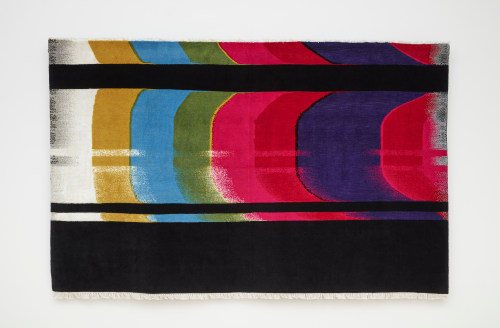
Nicholas Galanin, Signal Disruption, American Prayer Rug, 2020, wool, cotton, 60 x 96 inches (152.4 x 243.8 cm)
An Homage to the Creatives, Entrepreneurs, and Change-Makers of Today's America: Nicholas Galanin
October 14, 2020
Nicholas Galanin
Drawing from Indigenous traditions to create provocative contemporary art.
By Gisela Williams
The artist Nicholas Galanin makes work that both engages with and radically questions modern-day Western systems, including the art world itself. Born in Sitka, Alaska, of Tlingit-Unangax ancestry, the artist, 41, began making traditional jewelry as an apprentice to his father, silver carver Dave Galanin, then studied jewelry design at London Guildhall University. It was at Massey University in New Zealand, where he earned a master’s degree in Indigenous visual arts, that he started to produce the kind of installations he has come to specialize in, combining mediums as varied as sculpture, video, and land art.
“The work I created then,” alongside students and teachers of Maori descent, recalls Galanin, “was intentionally free from the romanticized frameworks that generally define what people think of as Indigenous art.” Examples of those early pieces include a series, “What Have We Become?,” that consists of books with pages carved into three-dimensional masks, a commentary on how Western literature has often erased Native narratives.
Galanin does multiple projects at the same time, from mounting a recent solo exhibition at Peter Blum gallery in New York to working with Tlingit tribe members on a dugout canoe project; from creating one-off jewelry pieces (Erykah Badu is a fan) to excavating a grave for a controversial statue of Captain James Cook in Sydney’s Hyde Park.
Galanin’s success hasn’t prevented him from questioning the very institutions that have championed him: Last year he pulled out of the Whitney Biennial to draw attention to one of the Whitney’s board members, Warren B. Kanders, because his company manufactured tear-gas canisters and other weapons. On a call from Sitka, Galanin says that he strongly believes in having Indigenous representation in the room, from professors to curators: “Everyone is less without it.”